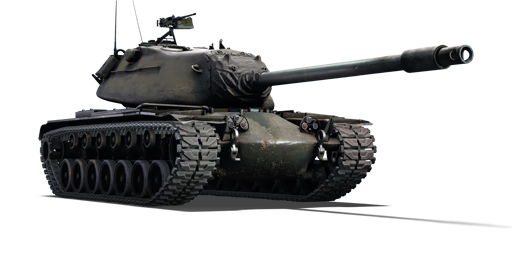During the Berlin Victory Parade of 1945, American and British representatives witnessed the debut of the Soviet IS-3 heavy tank. Concerned about how protected the IS-3 may be against Allied tanks of the time, the Americans began considering a tank design with the firepower capable of tackling the tank. By 1948, the new tank project began as the T43, utilizing American experience developing heavy tanks during World War II. Development of the tank expedited when the Korean War started, showcasing the urgent need for well-armed tanks to counter Soviet ones. As such, the T43 tanks began production even before testing was fully completed, resulting in a lengthy period of rebuilds as faults were discovered and incorporated into the design. Ultimately, 300 T43 and T43E1s were produced and standardized as the M103, with 80 going to the US Army and 220 going to the US Marine Corps. The heavy tanks remained in service until 1974.
Introduced alongside the American ground tech tree in Update 1.45 "Steel Generals", the M103 is armed with a monstrous 120 mm gun. Thanks to its powerful 120 mm gun with HEAT rounds, the tank can engage any target it encounters. However, the entire gameplay with the M103 revolves around its gun, as its decent armour is more of a bonus than an advantage, given that many opponents have HEAT and APDS rounds capable of penetrating its frontal armour without much difficulty. In such situations, the tank's rounded armour shapes with varying thickness often lead to enemy shots ricocheting. Furthermore, the M103's mobility is a weak point, as it struggles to keep up with most allies.















